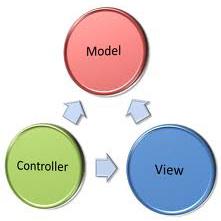Over the years, Software Quality Engineering has increased interest, demonstrated by significant research papers published in this area. Determining when a software artifact is qualitatively valid is tricky, given the impossibility of providing an objective definition valid for any perspective, context, or stakeholder. Many quality model solutions have been proposed that reference specific quality attributes in this context. However, these approaches do not consider the context in which the artifacts will operate and the stakeholder's perspective who evaluate its validity. Furthermore, these solutions suffer from the limitations of being artifact-specific and not extensible. In this paper, we provide a generic and extensible mechanism that makes it possible to aggregate and prioritize quality attributes. The user, taking into account his perspective and the context in which the software artifact will operate, is guided in defining all the criteria for his quality model. The management of these criteria is then facilitated through Multi-Criteria Decision Making (MCDM). In addition, we present the PRETTEF model, a concrete instance of the proposed approach for assessing and selecting MVC frameworks.
翻译:多年来,软件质量工程已经提高了人们的兴趣,这方面的大量研究论文表明了这一点。确定软件文物在质量上何时有效是棘手的,因为不可能提供对任何观点、背景或利益攸关方都有效的客观定义。许多质量模型解决方案都建议在这方面参考特定质量属性。然而,这些方法并不考虑艺术品将操作的背景以及评估其有效性的利益攸关方观点。此外,这些解决方案还受到文物特有性而不是可扩展性的限制。在本文中,我们提供了一个通用和可扩展的机制,使得有可能汇总质量属性并确定其优先顺序。用户考虑到他的观点和软件艺术品将操作的环境,在确定其质量模型的所有标准时受到指导。这些标准的管理随后通过多标准决策(MCDM)得到便利。此外,我们介绍了PRETEF模型,这是拟议评估和选择MVC框架的一个具体实例。





